Results matching “thumb”
Now that we have an understanding of some of the quality implements out there that we can use to train to lift the Inch Replica Dumbbell, we need to think about how we can use them to make sure we get the most out of them in our time training with them. The following tactics can be used for a thick loadable dumbbell or a Rolling Thunder Revolving Deadlift Handle, both of which I covered in my previous article.
Max Attempts
Probably one of the simplest strategies for trying to work your way toward lifting the Inch is Max Attempts. This involves loading the implements up with a poundage that is close to the 1 RM (one repetition maximum), or the heaviest weight you can perform for a full repetition.
I like this method because I can monitor my progress well with it. If every week you are able to add weight to the implement, then your grip is getting stronger with that implement and eventually you will be strong enough to lift the Inch Dumbbell, especially if the implement you are training with closely resembles the shape, handle size, handle texture, and grip-ripping action that the Inch Dumbbell has.
While you may see gains every single week at the beginning of a program, it is probably more realistic to expect to see some weeks where you improve, others where you stay the same, and still others where you are not able to lift as much as you have lifted previously. Grip training is just like any other type of lifting. Depending on your current health, nutritional state, level of rest and recuperation and other factors, you will feel and perform differently on any given day.
The important thing to remember is when you are feeling good, strive for the PR, or personal record. But if you are not feeling it that day, don't just give up. I think the effort that you are willing to put forth on your weaker training days is what makes the difference in the end. If I stopped my gripping routine every time I realized that my hands weren't feeling the best, I would almost never do a full grip routine. Since I train grip 4 or 5 times a week, my hands rarely feel fresh. I have to force the blood into my hands sometimes to get them to warm up. I have to work thick bar the day after I just worked pinch, so my thumbs often feel weary and feeble. I have to give myself deep-tissue massage in between sets to keep the muscles from cramping up. I know that my hands are just not going to feel well sometimes, but I also know the time I put in on those days is what is going to get me to first place at a contest or is going to get me that next gripper certification, or next completed feat of strength.
When you are feeling good, take advantage of it and try to tack on more weight. Go for the heaviest possible weight you can pull. This may mean you will have to try micro-loading.
Micro-loading is where you add small weights to the implement, weights that might weigh only a pound or so. Most of the time, the smallest weight a gym will have is a 2.5 pound plate (in the U.S.) but there are companies that sell smaller plates. A consistent supporter of the Gripboard, PDA sells Fractional Plates .Click to read more about what they offer.
Fractional plates allow you to work toward making finer gains. Instead of having to jump up 5 pounds by throwing a 2.5 on each side, you can put a 1-pounder on each side and go for a 2-pound PR!
When I want to micro-load, I sometimes use magnets. The magnets I use are called cow magnets. As some of you may know, cows will try to eat just about everything. They wander around the pasture gobbling up grass, but also end up chewing up pieces of metal. Coat hangers, bolts, screws, nuts and other strange pieces of metal have been found in the stomachs of cows, so some farmers purposely feed them magnets in order to attract the shavings from these pieces of metal in their stomachs. These magnets weigh a little more than a pound apiece and work great for micro-loading. I place one on each side of the dumbbell and lift!
Repetitions
You can build the endurance in yours hands by performing repetitions with your thick-handle implements. I will discuss two different ways to do this.
Slow Method
In order to consistently pull big weights, you must work near your 1 RM (One Repetition Maximum) and pull them over and over. Due to the nature of the weights being attempted, the pulls are going to be slow, almost a grinding pace, and that is why this is called the Slow Method.
This method involves placing as secure of a grip as possible on the implement prior to lifting. You should be very deliberate about how you place your hand and make sure it is in the optimal position every time. Take your time, get your grip right and perform good, full repetitions.
When I use this technique, I know I am doing it right when my entire hand feels worn out - fingers, thumb, palm and wrist. I stretch my hand around the handle and grip as tight as I can. I pretend my hands are like eagle talons trying to snap through a branch, and then pull until I can perform no more repetitions. Once I hit that point, I switch hands. Usually when I set the implement down, my grip has slipped a bit, or the contact with the floor has shaken the implement loose, so after I set the implement down, I normally take my hand off and the re-set my grip.
Quick Method
It's fundamental that if you constantly work close to your 1 RM, that you can burn yourself out, and possibly cause injury, so I also incorporate a quicker form of repetition method in my thick bar training.
With the quick method, the grip you apply is not going to be optimal. Instead of setting your grip on the implement with care and detail, you will just bend down and pull it the instant you contact the gripping surface.
This method is very ballistic in nature and teaches you to initiate as much of your strength as possible on the implement in a very short time span.
When I train with this technique, I feel it most in my finger tips and in the thumb. I think the reason for this is because I am not able to apply my calculated hand-wrapping technique and thus the weakest areas of the hand (fingertips & thumb) end up doing the most work to keep the dumbbell from slipping out of the grasp. After several sets, my hands are worn out.
Now that we have an understanding of some of the quality implements out there that we can use to train to lift the Inch Replica Dumbbell, we need to think about how we can use them to make sure we get the most out of them in our time training with them. The following tactics can be used for a thick loadable dumbbell or a Rolling Thunder Revolving Deadlift Handle,both of which I covered in my previous article.
Max Attempts
Probably one of the simplest strategies for trying to work your way toward lifting the Inch is Max Attempts. This involves loading the implements up with a poundage that is close to the 1 RM (one repetition maximum), or the heaviest weight you can perform for a full repetition.
I like this method because I can monitor my progress well with it. If every week you are able to add weight to the implement, then your grip is getting stronger with that implement and eventually you will be strong enough to lift the Inch Dumbbell, especially if the implement you are training with closely resembles the shape, handle size, handle texture, and grip-ripping action that the Inch Dumbbell has.
While you may see gains every single week at the beginning of a program, it is probably more realistic to expect to see some weeks where you improve, others where you stay the same, and still others where you are not able to lift as much as you have lifted previously. Grip training is just like any other type of lifting. Depending on your current health, nutritional state, level of rest and recuperation and other factors, you will feel and perform differently on any given day.
The important thing to remember is when you are feeling good, strive for the PR, or personal record. But if you are not feeling it that day, don’t just give up. I think the effort that you are willing to put forth on your weaker training days is what makes the difference in the end. If I stopped my gripping routine every time I realized that my hands weren’t feeling the best, I would almost never do a full grip routine. Since I train grip 4 or 5 times a week, my hands rarely feel fresh. I have to force the blood into my hands sometimes to get them to warm up. I have to work thick bar the day after I just worked pinch, so my thumbs often feel weary and feeble. I have to give myself deep-tissue massage in between sets to keep the muscles from cramping up. I know that my hands are just not going to feel well sometimes, but I also know the time I put in on those days is what is going to get me to first place at a contest or is going to get me that next gripper certification, or next completed feat of strength.
When you are feeling good, take advantage of it and try to tack on more weight. Go for the heaviest possible weight you can pull. This may mean you will have to try micro-loading.
Micro-loading is where you add small weights to the implement, weights that might weigh only a pound or so. Most of the time, the smallest weight a gym will have is a 2.5 pound plate (in the U.S.) but there are companies that sell smaller plates. A consistent supporter of the Gripboard, PDA sells Fractional Plates .Click to read more about what they offer.
Fractional plates allow you to work toward making finer gains. Instead of having to jump up 5 pounds by throwing a 2.5 on each side, you can put a 1-pounder on each side and go for a 2-pound PR!
When I want to micro-load, I sometimes use magnets. The magnets I use are called cow magnets. As some of you may know, cows will try to eat just about everything. They wander around the pasture gobbling up grass, but also end up chewing up pieces of metal. Coat hangers, bolts, screws, nuts and other strange pieces of metal have been found in the stomachs of cows, so some farmers purposely feed them magnets in order to attract the shavings from these pieces of metal in their stomachs. These magnets weigh a little more than a pound apiece and work great for micro-loading. I place one on each side of the dumbbell and lift!
Repetitions
You can build the endurance in yours hands by performing repetitions with your thick-handle implements. I will discuss two different ways to do this.
Slow Method
In order to consistently pull big weights, you must work near your 1 RM (One Repetition Maximum) and pull them over and over. Due to the nature of the weights being attempted, the pulls are going to be slow, almost a grinding pace, and that is why this is called the Slow Method.
This method involves placing as secure of a grip as possible on the implement prior to lifting. You should be very deliberate about how you place your hand and make sure it is in the optimal position every time. Take your time, get your grip right and perform good, full repetitions.
When I use this technique, I know I am doing it right when my entire hand feels worn out – fingers, thumb, palm and wrist. I stretch my hand around the handle and grip as tight as I can. I pretend my hands are like eagle talons trying to snap through a branch, and then pull until I can perform no more repetitions. Once I hit that point, I switch hands. Usually when I set the implement down, my grip has slipped a bit, or the contact with the floor has shaken the implement loose, so after I set the implement down, I normally take my hand off and the re-set my grip.
Quick Method
It’s fundamental that if you constantly work close to your 1 RM, that you can burn yourself out, and possibly cause injury, so I also incorporate a quicker form of repetition method in my thick bar training.
With the quick method, teh grip you apply is not going to be optimal. Instead of setting your grip on the implement with care and detail, you will just bend down and pull it the instant you contact the gripping surface.
This method is very ballistic in nature and teaches you to initiate as much of your strength as possible on the implement in a very short time span.
When I train with this technique, I feel it most in my finger tips and in the thumb. I think the reason for this is because I am not able to apply my calculated hand-wrapping technique and thus the weakest areas of the hand (fingertips & thumb) end up doing the most work to keep the dumbbell from slipping out of the grasp. After several sets, my hands are worn out.
You may notice that these techniques I am describing resemble the training techniques that Louie Simmons at Westside Barbell and Dave Tate and Jim Wendler of EliteFTS.com have developed and made famous for success in Powerlifitng. The techniques work for grip training, too. Varying the speed and load of the same or similar movements causes you to build more well-rounded strength, and that will help you build the strength needed to lift tremendous weights in a given type of lift. It really doesn’t matter if you are training a full body lift like the squat, or a lift that is more specialized to a given part of the body, like grip strength training.
I suggest working the slow method for three or four work sets of 2 or 3 repetitions. If you end up getting any more than 3 reps per set, the weight is too light and you should move the weight up, possibly with micro-loading.
With the Quick Method, you can work in the 3 to 5 rep range for 3 or 4 work sets. Make sure that you are moving the implement with blazing speed. Speed is the key here, as you want to train your hands to fire rapidly. This may mean dropping the load substantially. If the Loadable Dumbbell or Rolling Thunder starts slowing down, drop the weight even more.
I encourage you to try these techniques. Speed work is something that often gets neglected in the Grip routine.
Now that we have discussed varying the speed on your repetitions, next time we’ll look at varying the distance we pull.
In the meantime check out DieselCrew.com and Napalm’s Corner for more articles and videos on developing Grip Strength.
 Greek gymnast Eleni Petroulaki. Just one of the amazing physiques in this gallery of nude sporting stars over on femalemuscle.
Greek gymnast Eleni Petroulaki. Just one of the amazing physiques in this gallery of nude sporting stars over on femalemuscle.
 The incredibly sexy Jamie Eason.
The incredibly sexy Jamie Eason.
In part one of this series, I introduced you to the Inch Replica Dumbbell, a 172-pound cast iron dumbbell with a 2.38-inch diameter handle that literally tries to rip your fingers out of their sockets when you try to pick it up.
These Inch Dumbbells are lurking around the countryside, so you must begin preparing now so that when you are confronted with the challenge of lifting the Inch, you will be ready. Here are some of the ways I have prepared to lift the Inch in the past.
THICK BAR TRAINING
The SAID principle (Specific Adaptations to Imposed Demands) states that the body will respond specifically to how it is trained. With that in mind, in order to train specifically to lift the Inch, I knew I would have to try to replicate the conditions of the Inch dumbbell in my training. Since the handle of the Inch is so large, I knew I needed to include thick-handled implements in my training.
Home Made Inch Loader
When I began training for the Inch, I was on a very limited budget. There were many companies making thick handled loadable dumbbells at the time, but I just didn't have the money lying around to get one. I also did not have the skills to weld myself one, so I made one out of PVC pipe and duct tape.
I took a piece of 2-inch outside diameter PVC pipe about 18 inches long and found the center. There, I began wrapping duct tape around it until it was about 2.5 inches thick. I wrapped 3 of these coils, side-by-side, to make the handle surface. I worked slowly and was very deliberate when I applied the duct tape, and made sure the layers were very smooth - just like the Inch Dumbbell handle itself. These days, I no longer use my original PVC Inch Loader. One day in training I dropped it with about 150 pounds on it and the pipe cracked the sleeves where I load the plates.
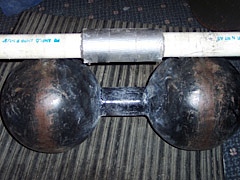 As you can see in the picture, the duct tape gripping surface ended up being longer than the inch replica's handle. A longer handle can make a dumbbell much easier to lift, especially if you grip the dumbbell off center, allow it to tilt, and brace the edge of the inside plate against your arm. I always tried to grab it right in the center and keep it as level as possible.
As you can see in the picture, the duct tape gripping surface ended up being longer than the inch replica's handle. A longer handle can make a dumbbell much easier to lift, especially if you grip the dumbbell off center, allow it to tilt, and brace the edge of the inside plate against your arm. I always tried to grab it right in the center and keep it as level as possible.
To qualify for the Inch Dumbbell Lift on the Gripboard Records List, you must lift the Inch Dumbbell without excessive tilt. The reason behind this is when the Inch tilts, the globe bell can be braced against the heel of the hand, or even the wrist. By initiating this contact, the athlete can reduce how much the Inch rotates, making the lift easier. To preserve the genuineness of the feat, the rules were modified so that the athlete had to lift it as level as possible. 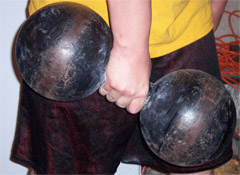 The picture at the left shows the inch being tilted too much to count for an official lift.
The picture at the left shows the inch being tilted too much to count for an official lift.
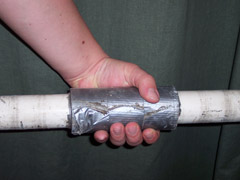 You can also make a lift with the duct tape handle easier by placing your thumb or fingertips on the edge of the duct tape, especially if the ends of the tape become rolled. This is not going to do anything for you in the long run, so I suggest being careful when placing your hand on the handle, and making sure you are not getting any assistance from the end of the tape coil.
You can also make a lift with the duct tape handle easier by placing your thumb or fingertips on the edge of the duct tape, especially if the ends of the tape become rolled. This is not going to do anything for you in the long run, so I suggest being careful when placing your hand on the handle, and making sure you are not getting any assistance from the end of the tape coil.
This inch trainer proved to be a pretty accurate training aid. In fact, the slick duct tape handle, combined with the fact that I wrapped it a bit thicker than the actual Inch handle, has led me to believe that lifting 172 on the loadable would have been tougher than lifting the actual Inch Dumbbell. The beauty of this home-made device was that I could train specifically for the feat at a fraction of the cost.
Steel Thick Loadable Dumbbell
Once I dropped and cracked the PVC inch-loader, I decided it was time to get myself one made out of steel that would hold up to the beatings I would be putting it through.
 I recommend getting your Inch-trainer loadable handles from John Beatty at Fat Bastard Barbell Company. His equipment is excellent, his turn-round time is fantastic and he supports and sponsors just about every Grip Contest in the United States and abroad. You can get them right from his website, or you can get them from APT Pro Wrist Straps. The loadables APT sells are made by John Beatty and by getting them from APT, you can support two perennial sponsors of the Diesel Crew's Global Grip Challenge.
I recommend getting your Inch-trainer loadable handles from John Beatty at Fat Bastard Barbell Company. His equipment is excellent, his turn-round time is fantastic and he supports and sponsors just about every Grip Contest in the United States and abroad. You can get them right from his website, or you can get them from APT Pro Wrist Straps. The loadables APT sells are made by John Beatty and by getting them from APT, you can support two perennial sponsors of the Diesel Crew's Global Grip Challenge.
In part one of this series, I introduced you to the Inch Replica Dumbbell, a 172-pound cast iron dumbbell with a 2.38-inch diameter handle that literally tries to rip your fingers out of their sockets when you try to pick it up.
These Inch Dumbbells are lurking around the countryside, so you must begin preparing now so that when you are confronted with the challenge of lifting the Inch, you will be ready. Here are some of the ways I have prepared to lift the Inch in the past.
THICK BAR TRAINING
The SAID principle (Specific Adaptations to Imposed Demands) states that the body will respond specifically to how it is trained. With that in mind, in order to train specifically to lift the Inch, I knew I would have to try to replicate the conditions of the Inch dumbbell in my training. Since the handle of the Inch is so large, I knew I needed to include thick-handled implements in my training.
Home Made Inch Loader
When I began training for the Inch, I was on a very limited budget. There were many companies making thick handled loadable dumbbells at the time, but I just didn’t have the money lying around to get one. I also did not have the skills to weld myself one, so I made one out of PVC pipe and duct tape.
I took a piece of 2-inch outside diameter PVC pipe about 18 inches long and found the center. There, I began wrapping duct tape around it until it was about 2.5 inches thick. I wrapped 3 of these coils, side-by-side, to make the handle surface. I worked slowly and was very deliberate when I applied the duct tape, and made sure the layers were very smooth – just like the Inch Dumbbell handle itself. These days, I no longer use my original PVC Inch Loader. One day in training I dropped it with about 150 pounds on it and the pipe cracked the sleeves where I load the plates.
 As you can see in the picture, the duct tape gripping surface ended up being longer than the inch replica’s handle. A longer handle can make a dumbbell much easier to lift, especially if you grip the dumbbell off center, allow it to tilt, and brace the edge of the inside plate against your arm. I always tried to grab it right in the center and keep it as level as possible.
As you can see in the picture, the duct tape gripping surface ended up being longer than the inch replica’s handle. A longer handle can make a dumbbell much easier to lift, especially if you grip the dumbbell off center, allow it to tilt, and brace the edge of the inside plate against your arm. I always tried to grab it right in the center and keep it as level as possible.
To qualify for the Inch Dumbbell Lift on the Gripboard Records List, you must lift the Inch Dumbbell without excessive tilt. The reason behind this is when the Inch tilts, the globe bell can be braced against the heel of the hand, or even the wrist. By initiating this contact, the athlete can reduce how much the Inch rotates, making the lift easier. To preserve the genuineness of the feat, the rules were modified so that the athlete had to lift it as level as possible.  The picture at the left shows the inch being tilted too much to count for an official lift.
The picture at the left shows the inch being tilted too much to count for an official lift.
 You can also make a lift with the duct tape handle easier by placing your thumb or fingertips on the edge of the duct tape, especially if the ends of the tape become rolled. This is not going to do anything for you in the long run, so I suggest being careful when placing your hand on the handle, and making sure you are not getting any assistance from the end of the tape coil.
You can also make a lift with the duct tape handle easier by placing your thumb or fingertips on the edge of the duct tape, especially if the ends of the tape become rolled. This is not going to do anything for you in the long run, so I suggest being careful when placing your hand on the handle, and making sure you are not getting any assistance from the end of the tape coil.
This inch trainer proved to be a pretty accurate training aid. In fact, the slick duct tape handle, combined with the fact that I wrapped it a bit thicker than the actual Inch handle, has led me to believe that lifting 172 on the loadable would have been tougher than lifting the actual Inch Dumbbell. The beauty of this home-made device was that I could train specifically for the feat at a fraction of the cost.
Steel Thick Loadable Dumbbell
Once I dropped and cracked the PVC inch-loader, I decided it was time to get myself one made out of steel that would hold up to the beatings I would be putting it through.
 I recommend getting your Inch-trainer loadable handles from John Beatty at Fat Bastard Barbell Company. His equipment is excellent, his turn-round time is fantastic and he supports and sponsors just about every Grip Contest in the United States and abroad. You can get them right from his website, or you can get them from APT Pro Wrist Straps. The loadables APT sells are made by John Beatty and by getting them from APT, you can support two perennial sponsors of the Diesel Crew’s Global Grip Challenge.
I recommend getting your Inch-trainer loadable handles from John Beatty at Fat Bastard Barbell Company. His equipment is excellent, his turn-round time is fantastic and he supports and sponsors just about every Grip Contest in the United States and abroad. You can get them right from his website, or you can get them from APT Pro Wrist Straps. The loadables APT sells are made by John Beatty and by getting them from APT, you can support two perennial sponsors of the Diesel Crew’s Global Grip Challenge.
Rolling Thunder
 The Rolling Thunder Revolving Deadlift Handle is a product sold by IronMind Enterprises, Inc, another of our dedicated GGC sponsors.
The Rolling Thunder Revolving Deadlift Handle is a product sold by IronMind Enterprises, Inc, another of our dedicated GGC sponsors.
What makes the Rolling Thunder so vicious is the rotating gripping surface. When you pull, the rotating action forces your hand so that the space between your fingers and thumb end up pointing down toward the floor. 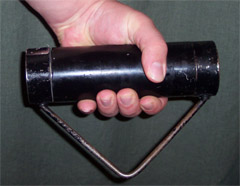
This is the weakest point of your grasp on the implement, and you must have tremendous finger tip and thumb strength in order to pull the weight stack to lockout. You can pick yourself up a Rolling Thunder at IronMind's Store.
Shot Loadable Replicas
Another option for replicating the Inch Dumbbell without actually purchasing one is a Shot Loadable version. These dumbbells are hollow and have holes in the bells through which steel shot can be poured to gradually increase the weight of the implement. You can see an example of a Shot Loadable Dumbbell at PDA's site.
These are some the most common implements athletes use to train specifically to lift the Inch Dumbbell. All of these are great options for preparing for battle with the Inch.
Next time, we're going to dig a little deeper with some of this equipment and see the lifting techniques we can use to get the most out of these implements.
Be sure to sign up for the Straight to the Bar feed Newsletter, in the right-hand corner at the top of the page so you never miss a post.
Thanks for reading,
NAPALM
DieselCrew.com
Napalm's Blog
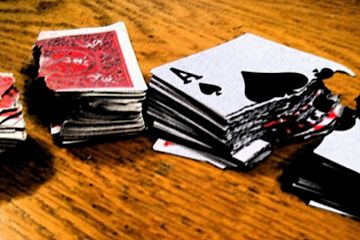
I tear because I can, and tearing gives me a sense of accomplishment and finality that other forms of resistance training don`t provide. There are not many other activities that combine a high level of mental toughness, explosive strength, brute strength, a bit of strength endurance and last but not least complete and utter VICTORY. If you pull or press a weight for a PR the weight looks at you as if to say you won that one, what have you got now? (no weights don't speak to me, well at least not too often) When you tear or bend the job is DONE. The only thing left is to decide if you want to tear the halves into quarters.
The purpose of this article is tearing and I will stick to two areas of tearing that I have had some success. Mind you, I do not consider myself a guru or any such nonsense. I am simply a fairly strong man who has found pleasure in tearing and bending and feel a need to share these old time strong man exercises with others.
Technique and mind-set are critical to your success in tearing. Mind-set is more important initially in the sense that if you are truly focused and concentrate on generating tension in the proper sequence, then you have a shot at delivering the necessary power to complete your task. The quality of your technique will determine how efficiently you are able to deliver that power. The way to increase your skill level is to practice. Keep in mind I'm referring to quality practice, do not mindlessly crank out repetitions to say you are done.
Remember, practice does not make perfect, "perfect practice makes perfect".

I don't care if you tear a stack of paper, a deck of playing cards, or a stack of bills you don`t want to pay. Tearing is good fun. Tearing can have some advantages over other types of destructive training/enjoyment as the technique I will describe is significantly easier on the elbows than short steel bending. Additionally, everyone thinks they know someone who can tear a deck of cards. That someone should and will be you!
I tear because I can, and tearing gives me a sense of accomplishment and finality that other forms of resistance training don`t provide. There are not many other activities that combine a high level of mental toughness, explosive strength, brute strength, a bit of strength endurance and last but not least complete and utter VICTORY. If you pull or press a weight for a PR the weight looks at you as if to say you won that one, what have you got now? (no weights don't speak to me, well at least not too often) When you tear or bend the job is DONE. The only thing left is to decide if you want to tear the halves into quarters.
The purpose of this article is tearing and I will stick to two areas of tearing that I have had some success. Mind you, I do not consider myself a guru or any such nonsense. I am simply a fairly strong man who has found pleasure in tearing and bending and feel a need to share these old time strong man exercises with others.
Technique and mind-set are critical to your success in tearing. Mind-set is more important initially in the sense that if you are truly focused and concentrate on generating tension in the proper sequence, then you have a shot at delivering the necessary power to complete your task. The quality of your technique will determine how efficiently you are able to deliver that power. The way to increase your skill level is to practice. Keep in mind I'm referring to quality practice, do not mindlessly crank out repetitions to say you are done.
Remember, practice does not make perfect, "perfect practice makes perfect".
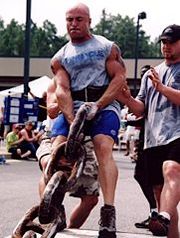 This looks interesting - MustSeeStrongman.com. Looking forward to Dec 1st.
This looks interesting - MustSeeStrongman.com. Looking forward to Dec 1st.

